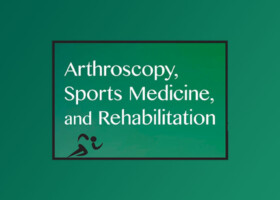
Authors:
T. J. Ridley, M.D., Marilee P. Horan, M.P.H., Philip-C. Nolte, M.D., M.A., Bryant P. Elrick, M.D., M.Sc., and Peter J. Millett, M.D., M.Sc.
Abstract:
Purpose: To investigate clinical outcomes, return to sport, and complication rate in patients with an isolated SLAP II-IV tear treated with biceps tenodesis (BT), SLAP-repair (SLAP-R), or both (SLAP-R+BT).
Methods: A retrospective analysis of prospectively collected data was performed in patients who underwent surgery between February 2006 and February 2018 for isolated SLAP II-IV lesions with either BT, SLAP-R, or SLAP-R+BT and had minimum 2-year follow-up. Patients were excluded if they were older than 45 years of age, had anterior shoulder instability, rotator cuff tears, glenohumeral osteoarthritis, or concomitant fractures about the shoulder. Clinical outcomes were assessed by the use of the American Shoulder and Elbow Society Score, Single Assessment Numerical Evaluation Score, Quick Disabilities of the Arm, and Shoulder and Hand Score, the General Health Short Form-12 Physical Component, and patient satisfaction.
Results: There were 38 shoulders in the isolated BT group with 1 (2.6%) shoulder requiring revision, 13 in the SLAP-R group with no patient requiring revision, and 21 in the SLAP-R+BT group with 2 (9.5%) shoulders requiring revision. Minimum 2-year follow-up was obtained in >85% of each group. Mean age at time of surgery was significantly different between the groups (36.5 years BT vs 27.7 years SLAP-R vs 36.5 years SLAP-R+BT; P = .003). While patient-reported outcomes improved significantly from pre- to postoperatively for the BT (P < .001) and SLAP-R+BT groups (P < .001), they did not significantly improve for the isolated SLAP-R group (P values ranging .635 to .123). The BT and SLAP-R+BT groups showed significant improvement in return to sport pre- to postoperatively whereas the SLAP-R group did not. The SLAP-R+BT group had the most patients reaching minimal clinical important difference, substantial clinical benefit, and patient acceptable symptom state American Shoulder and Elbow Society Score scores; however, this was not statistically significant.
Conclusions: SLAP II-IV lesions treated with BT or both SLAP-R+BT demonstrated improved outcomes compared with isolated SLAP-R at minimum 2-year follow-up. Concomitant biceps tenodesis should be considered when performing repair of SLAP II-IV tears.
Level of evidence: III; Retrospective comparative study.
You may download the study: Concomitant Biceps Tenodesis Improves Outcomes for SLAP Repair: Minimum 2-Year Clinical Outcomes after SLAP II-IV Repair Versus Tenodesis Versus Both
